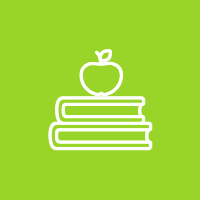In early spring, the tiny, bright green leaves of many trees burst forth. Where do the leaves come from? How do they form? In this activity, your students will find the answers to these questions on their own by observing tree buds throughout the year.
This is one of 96 activities that can be found in PLT’s PreK-8 Environmental Education Activity Guide. To get the activity, attend a training either in person or online and receive PLT’s PreK-8 Guide. Below are some supporting resources for this activity.
STEM STRATEGIES 
Engage students in real-world applications of STEM (science, technology, engineering, math) education.
Try these STEM Connections for this PLT activity:
RECOMMENDED READING 
Expand your students’ learning and imaginations. Help students meet their reading goals, while building upon concepts learned in this activity, with the following children’s book recommendations:
FAMILY ACTIVITY 
Try a simple variation of this activity to engage children in the outdoors at home. Download this fun and easy-to-do family activity.
ADDITIONAL RESOURCES 
The following tools and resources may be used to enhance the activity.
-
Journey North
Discover the seasonal changes that are all around us! Follow animal migrations by observing, reporting, and tracking their travels across the hemisphere. Citizen scientists, across North America, share their own observations of migrations and other signs of the seasons. Journey North is a free online program and mobile app presented by Annenberg Learner.
-
Citizen Science Programs
Project BudBurst is a network of people across the United States who monitor plants as seasons change. Use Project Learning Tree activities to get your students outside, and use Project BudBurst to help them see how their seasonal observations about plants compare to those being made all across the country. In addition to collecting scientifically useful data such as first leafing, first flower, and first fruit, students will understand the impacts of changing climates on plants and their phenology. Project Learning Tree and Project BudBurst have partnered to introduce students to citizen science as the observations and data needed for Project BudBurst are an easy addition to PLT’s GreenSchools School Site Investigation, as well as many other PLT PreK-8 activities, especially “Bursting Buds,” “Looking At Leaves,” and “Signs of Fall.”
Project FeederWatch encourages students to periodically count the birds they see at feeders in their schoolyard, backyard, or other locations from November through early April and to send their counts to Project FeederWatch. Project FeederWatch is operated by the Cornell Lab of Ornithology and Bird Studies Canada.
FrogWatch USA, the citizen science program of the Association of Zoos and Aquariums, encourages citizens to help conserve amphibians by reporting the calls of local frogs and toads. Ongoing analyses of these data have been used to help develop practical strategies for amphibian conservation.
The USA National Phenology Network brings together citizen scientists, government agencies, non-profit groups, educators, and students to monitor the effects of climate change on plants and animals in the United States. This website includes a variety of educational materials and lesson plans.
-
A Forest Year
Check out this video, which captures 15 months of a forest’s life. This 3-minute time lapse video was created from 40,000 photographs. Photographer Samuel Orr took pictures out of the same window in his home to create this forest montage. This forest snapshot is just outside of Bloomington, Indiana and was photographed between 2006 and 2008.


